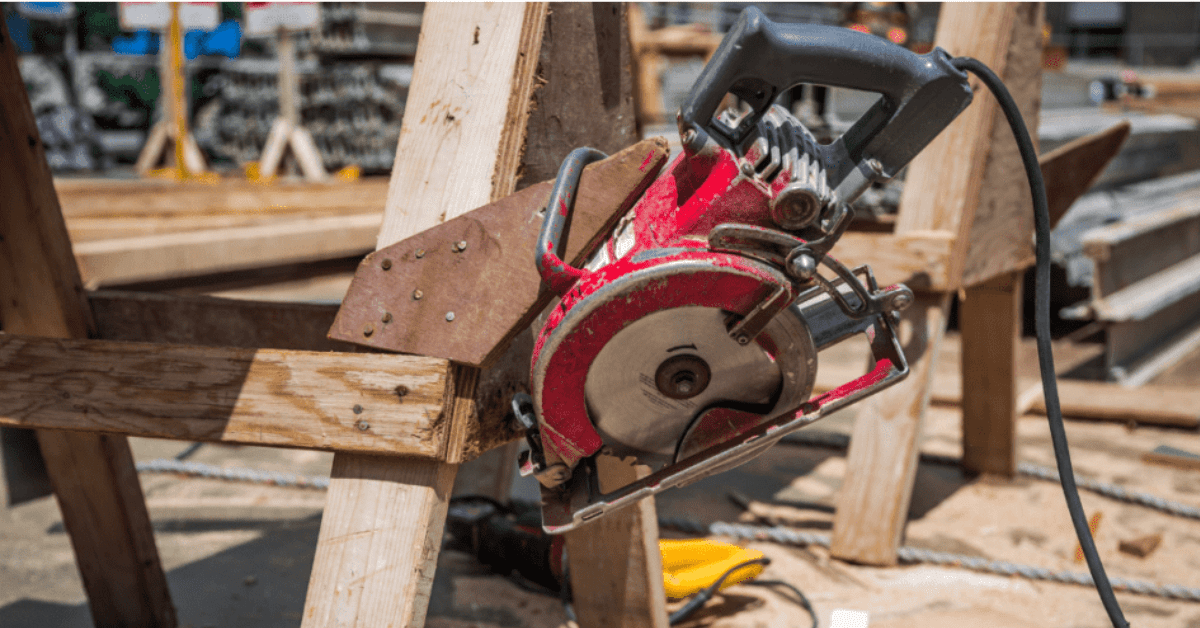

Devices on the jobsite that should never end up in the wrong hands, like handheld power tools. With whirring blades often used in harsh or demanding circumstances, there is an obvious safety issue that anyone with a stake in this industry would immediately recognize and take every step possible to minimize.
But, while the construction industry has made big strides connecting the largest, most expensive machines on a jobsite like excavators, handheld tools — those everyday essentials like drills and hammers — are still operating in the dark. And that’s a problem.
This isn’t just about convenience or lost tools. It’s about safety, efficiency, and cost. If the power tools segment doesn’t catch up soon, we’re leaving millions of dollars and countless opportunities for improvement on the table.
Let’s start with the obvious. While the stakes are high, power tool manufacturers have little visibility into how handheld tools are used or misused once they leave the factory.
‘Power tool manufacturers have little visibility into how handheld tools are used or misused once they leave the factory.’
Think about that for a second. A power tool manufacturer can produce tens of millions of units a year, yet has no idea what happens to them after they’re shipped. There’s no insight into how the tools perform on-site, whether they’re maintained properly, or if they pose a safety risk.
If a defect in a tool causes an accident, the consequences can be severe —injuries, lawsuits, insurance claims, even recalls. And those are just the immediate impacts. For project owners and contractors, a single tool-related incident can lead to budget overruns, delayed delivery schedules, and a lot of finger-pointing over who’s to blame.

And, despite the best efforts of even the most stringent quality check processes and the strict implementation of training programs, the record shows that handheld power tools are a common denominator in accidents.
It’s not like this in the heavy equipment world. Large machines are connected, monitored, and maintained with precision, ensuring their safety and performance throughout their lifecycle. So why aren’t power tools being treated the same way?
Let’s talk about money. Historically, power tools have been considered too small or too cheap to bother connecting. If a few go missing or break, it’s seen as the cost of doing business. Project owners budget for this, assume some loss, and move on.
‘For project owners and contractors, a single tool-related incident can lead to budget overruns, delayed delivery schedules, and a lot of finger-pointing over who’s to blame.’
But that thinking doesn’t hold up anymore. Today, the cost of technology — GPS, wireless, cellular — has dropped significantly. It’s no longer prohibitively expensive to track and monitor even small, handheld tools. That changes everything.
When power tools are connected, contractors can track where they are, monitor how they’re being used, and predict when they’ll need maintenance. No more overordering to replace lost or broken tools. No more downtime caused by unexpected failures. For project owners and contractors, it’s a game-changer.
And in the rare event that a product is actually faulty, the manufacturer might discover this in two weeks on the back of data insights feeding into the system rather than 12 months as anecdotal, aggregated evidence gradually builds into an overwhelming case. That quick identification of an error, dramatically cutting the learning chain, could prevent a bad outcome becoming a terrible one.
When you add safety to the mix, the stakes get even higher. A connected power tool that sends out an alert when it’s malfunctioning or nearing the end of its lifecycle, could prevent an accident before it happens. That’s not just good business; it’s common sense.
The good news is that the technology is ready, and the costs make sense. But many manufacturers haven’t fully embraced the idea of connectivity. Why? Because it’s a big shift in how they think about their products.

For decades, the manufacturers have focused on producing high-quality, durable equipment. Connectivity requires a different mindset — one that views power tools not just as standalone products, but as part of a larger, integrated ecosystem. Some manufacturers, like Hilti, are already ahead of the curve with connected solutions. Others are just beginning to explore the possibilities.
Curious how one of the industry’s leading toolmakers is building a connected ecosystem with Trackunit? See how Hilti is turning data into a competitive edge.
But change is coming. Contractors and project owners are starting to demand smarter, safer tools, and that pressure will only increase. As government and state-mandated projects require stricter safety and environmental compliance, connectivity will become less of a “nice to have” and more of a necessity.
This is where it gets interesting. The drive for connected tools won’t just come from the manufacturers — it’ll come from the contractors and project owners who rely on them. They are under constant pressure to deliver on time, on budget, and with minimal risk. For them, the ability to track tools, ensure safety, and avoid costly overruns isn’t optional. It’s critical — and solutions like a jigsaw fleet management system are becoming essential to tie these moving parts together.
‘A connected power tool that sends out an alert when it’s malfunctioning or nearing the end of its lifecycle, could prevent an accident before it happens. That’s not just good business; it’s common sense.’
In such an environment, OEMs that embrace connectivity will gain a competitive edge. Just as contractors use their safety records to win contracts, OEMs that can offer connected solutions will be better positioned to partner with top-tier players. It’s an opportunity to stand out in a crowded market and build stronger, more valuable relationships with customers.
Let’s face it: the days of treating power tools as disposable, unconnected assets are coming to an end. The benefits of connecting them — improved safety, reduced costs, and greater efficiency — are too significant to ignore. As more devices come online, power tools are becoming a vital piece in the broader tools jigsaw driving construction’s digital transformation.
For the manufacturers, this isn’t just about keeping up with technology. It’s about rethinking how they operate, gaining visibility into their products, and delivering real value to their customers. And for the construction industry as a whole, it’s about plugging one of the last gaps in the connectivity puzzle.
The power tools segment is the next domino to fall in the connectivity revolution. And once it does, the industry will be better — and safer — for it.
Canada’s construction sector is evolving rapidly — powered by companies that embrace smart technology, operational excellence, and sustainable growth. Whether you’re building highways, high-rises, or housing developments, staying ahead means working smarter.
Looking to take control of your equipment fleet? Trackunit’s advanced telematics solution helps Canadian contractors gain real-time insight into their machines, tools, and jobsite performance.
Schedule a demo today and learn how to boost efficiency, reduce equipment-related delays, and gain full visibility across your projects with a platform built for construction leaders.

